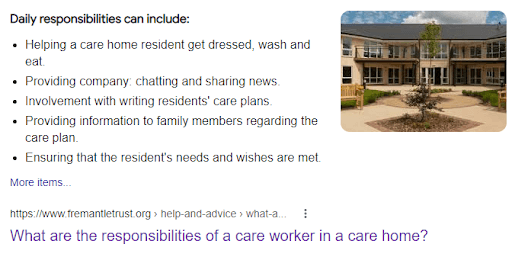Tech SEO mistakes that hinder organic performance
We have produced a number of audits for clients over the years and identified areas where technical performance could be improved. Often, the same mistakes are made, damaging both organic performance and revenue. In this post, we’ll review some of the most common issues and how you can ensure your website’s foundations are technically sound, enabling organic growth for your business.
1. Missing HTTPS security
HTTPS protocol signals to users and Google that your site is secure. It enables data encryption to and from the servers to users and prevents any information from being stolen. Websites which are classed as not secure can lead to users feeling uncomfortable browsing, especially if you’re an eCommerce business where you’re attempting to generate product revenue and users need to input payment details.
To prevent this from occurring, purchasing and then installing an SSL certificate from a Certificate Authority, will convert your HTPP website to HTTPS. This will show up as secure when users click on your website, instilling trust in your users, which will decrease the bounce rate and aid conversions. We recommend speaking to your development team so they can assist with this implementation.
2. Slow site speed
There are times when you’ll come across a website that takes a significantly long time to load. Today, we expect things to happen instantaneously, and if they don’t, we feel frustrated.
Having a slow site speed, generally 3 seconds or more, can prevent users from waiting for the page to load. In turn, users may click off your site and onto a competitor’s website instead. Losing a user within a few seconds could cost your business a lot of money.
Not only is fast site speed important to users, but it also is important to Google, with the introduction of the page experience update in 2021. This is measured using the core web vitals metrics.
You can check whether your webpages on desktop and mobile are within the recommended limits by using PageSpeed Insights. The recommendations can vary from something simple that you action yourself such as compressing images, to JavaScript minification which a web developer would help to implement.
3. Broken Links
Landing on a webpage and finding a ‘404 Error: Page Not Found’ message on your screen is incredibly frustrating – a user thought they would be landing on a working webpage and instead have to backtrack. This can occur if a page has been deleted but is still found by Google, if the content has moved to a new URL, or if the URL has been mistyped either in the creation process or by a user.
If other pages on your website are linking to a broken page, these internal links can be removed or updated to a new webpage if one exists. If the broken page is linked from other websites, and you have a new up-to-date URL, you can redirect the broken URL so users are directly taken to the new page instead. If this page is old and should just be deleted, you can stop Google from coming across it by making it non-indexable and removing it from the sitemap. The reason for this is that Google prefers well-maintained websites and ones which are easy to use, over ones that aren’t.
4. Structured Data
Standing out from the crowd and giving your website a competitive edge is important.
Structured data enables your website to appear as a rich result within the search engine results page (SERP). This means that your website can take up more real estate, appear more intriguing to users and therefore increase conversion rate. This also helps Google to better understand the context of your content.
Structured data comes in many forms, whether that’s Organisation Schema, FAQ Schema, BlogPost Schema or even Product Schema. You can implement multiple schema types for each webpage, no matter what business you have or what your aim is for your website. Below is an example of a blog post featured snippet.

5. Duplicate Content
Having original content on your website is important as Google wants to show users the correct version of the copy. Duplicated copy can confuse this process, and Google may show users an incorrect version or a previous version of the page instead.
Duplicated copy can be found in many instances, whether it’s a similar webpage, an older version of a webpage, repeated different language versions of a website found on an international website, or one product on an eCommerce website having various URL structures.
301 redirects are a sufficient way of handling duplicate content issues. This would direct users and Google to the correct version of the page, thus preventing them from landing on the older version.
To summarise
There are many technical obstacles within SEO that you can come across on your website, which can lead to poor organic performance. These can range from less impactful to more impactful, and elements that you can implement yourself to elements that you may need help with from developers. The list above is by no means exhaustive, but are some of the most important aspects of technical SEO which many commonly get wrong. Righting these wrongs can improve the foundation of your website, allowing you to build upon it, enabling it to grow.



